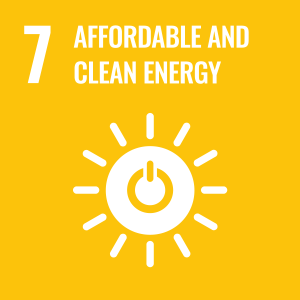
Vinura Udaraka Wickramasinghe Wickrama Appuhamilage
Academic and research departments
Advanced Technology Institute, Faculty of Engineering and Physical Sciences.About
My research project
Large scale manufacturing of Organic Photovoltaic CellsDesign and fabrication of energy scavenging thin film materials For many decades
crystalline silicon solar cells have dominated the solar market. But, this dominance may
now be challenged with the emergence of perovskite solar cells as well as organic solar
cells which are performing in excess of 15%. In this project we will look to develop the
next generation of solar harvesting devices that will give high power conversion at low
cost. We believe this will be either organic (OPV), Perovskite (PPV) or a hybrid
organic-inorganic mixed solar cell. This type of cell will be researched and developed
here. To conduct research into the production of organic perovskite (PPV) or hybrid (OPV)
photovoltaic solar cells. You will join a team of postdoctoral and PhD students working on
different aspects of synthesis, deposition and fabrication of high efficiency large area
solar cells. The aim of the project is to develop material systems that allow for large
area manufacturing technologies to be developed that will enable a step change in the cost
of production of large area deployable solar technologies. In particular, the applicant
will be involved in the experimental development of small area, but scalable devices
supported by computational modelling optimization, with an aim of knowledge transfer to
large area Roll-2-Roll manufacturing technology.
Design and fabrication of energy scavenging thin film materials For many decades
crystalline silicon solar cells have dominated the solar market. But, this dominance may
now be challenged with the emergence of perovskite solar cells as well as organic solar
cells which are performing in excess of 15%. In this project we will look to develop the
next generation of solar harvesting devices that will give high power conversion at low
cost. We believe this will be either organic (OPV), Perovskite (PPV) or a hybrid
organic-inorganic mixed solar cell. This type of cell will be researched and developed
here. To conduct research into the production of organic perovskite (PPV) or hybrid (OPV)
photovoltaic solar cells. You will join a team of postdoctoral and PhD students working on
different aspects of synthesis, deposition and fabrication of high efficiency large area
solar cells. The aim of the project is to develop material systems that allow for large
area manufacturing technologies to be developed that will enable a step change in the cost
of production of large area deployable solar technologies. In particular, the applicant
will be involved in the experimental development of small area, but scalable devices
supported by computational modelling optimization, with an aim of knowledge transfer to
large area Roll-2-Roll manufacturing technology.
Teaching
Conducting laboratory demonstrations for EEE2036 LABORATORIES, DESIGN & PROFESSIONAL STUDIES III, EEE2037 LABORATORIES, DESIGN & PROFESSIONAL STUDIES IV modules since 2022.
Sustainable development goals
My research interests are related to the following:



Publications
The studies discussed in this research paper mainly focus on a novel method of using magnetic field densities to locate any kind of fault that occurs in medium voltage overhead lines. The first part of this project is the optimization of hall effect sensors for this approach. For that, several sensor positions were reviewed, so that the maximum resultant magnetic field flux is subjected to determine the magnetic field variations of the lines more accurately where a contactless measure monitoring system is proposed. In the second stage of the project, modelling of the hall effect sensor and communication platform was carried out. The impact of the existing noise parameter is also addressed to validate the algorithm for practical implementation. Finally, the expected results were obtained using a modelled distribution line network. This paper covers developing an algorithm to locate distribution line faults at any kind of faulty condition. The algorithm was developed by analyzing the simulation results and the graphs obtained through several line faulty conditions, using MATLAB Simulink. The fault detection method mainly depends on the significant variation of the magnetic field density locating the fault is done by comparing the peak values at each sensor node. To validate the modelled power system simulation, a successful comparison was carried out with the data received from a real-world existing distribution line network, modelled in LECO. The final results of the modelled system verified the validity of the proposed algorithm for fault locating of medium voltage overhead lines.
Second-generation solar cells, commonly known as thin-film solar cells, have emerged as promising alternatives to traditional silicon-based first-generation photovoltaic cells. The superstrate configuration is the most widely used structure for constructing thin-film solar cells. Nevertheless, light reflection from the front cover glass surface significantly contributes to energy losses in thin-film solar cells. In this study, a ZnO anti-reflection (AR) coating was introduced using the spin coating technique on a glass/FTO/CdS/CdTe/Cu/Au substrate to improve the power conversion efficiency of the solar cell by reducing front-surface reflectance. The ZnO layer deposited at 3000 rpm in 15 s showed the minimum reflectance and higher transmittance over a wavelength range of 500-900 nm. Further, the thickness of the film under optimal conditions was 63.32 nm, which is compatible with the ideal theoretical AR coating thickness of 65 nm. Comparing the device performance of the CdS/CdTe solar cell with and without AR coating, all tested devices showed an average short-circuit current density improvement of 6.8% and overall enhancement in power conversion efficiency of 9.3%.